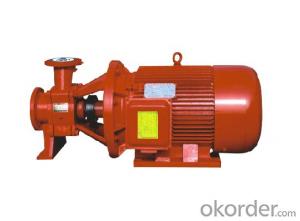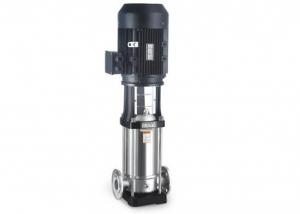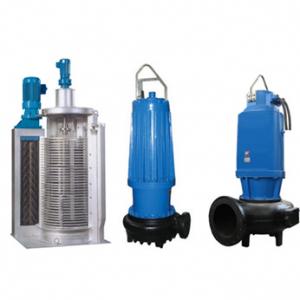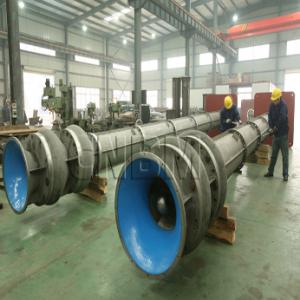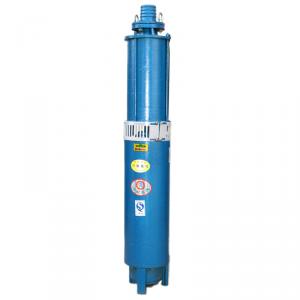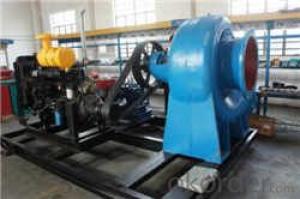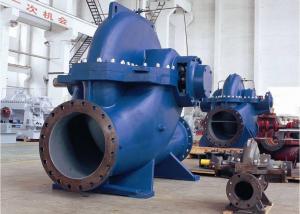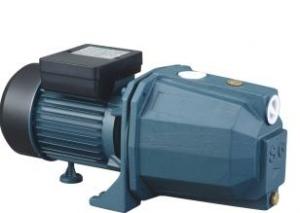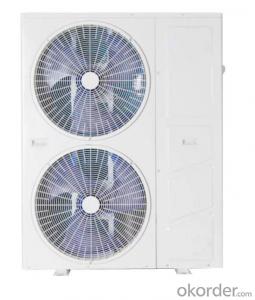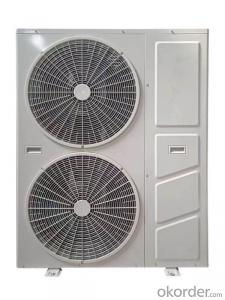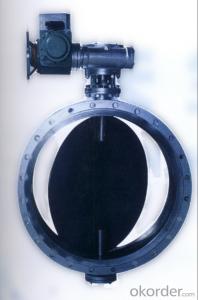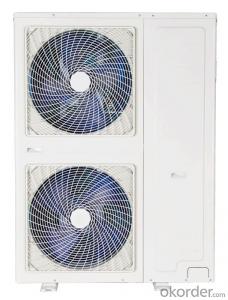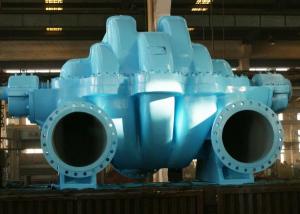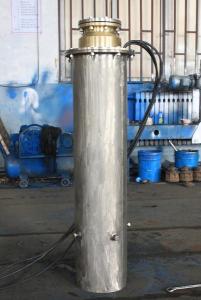Variable Flow Constant Pressure Fire Tangent Pumps
- Loading Port:
- China Main Port
- Payment Terms:
- TT OR LC
- Min Order Qty:
- -
- Supply Capability:
- -
OKorder Service Pledge
OKorder Financial Service
You Might Also Like
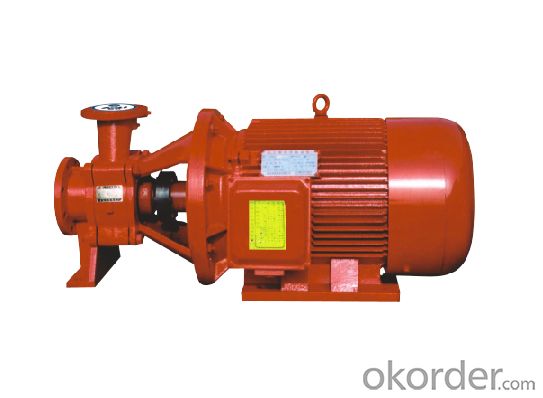
XBD-HY(HYL) series variable flow constant pressure fire tangent pumps are third-generation new products updated on the basis of XBD-HY(TB) series variable flow constant pressure fire pumps. Blended with the advanced technology from USA and Switzerland, and developed under the guidance of famous professors from Jiangsu Institute of Technology, this series of products are superior to the former kind of fire tangent pumps. Designed to the theory of partial emission pump, this product is the first of its kind at home, with its performance and technical specifications fully in compliance with the newly enacted standard of GB6245-2006 Performance Requirements and Test Methods for Fire Pumps.
Features:
1) The most distinguishing characteristic of XBD-HY(HYL) series variable flow constant pressure fire tangent pumps is variable flow constant pressure with flat flow and head curves, i.e. head remains almost unchanged (within 5%) when pump c:hanges in the range from zero flow to the maximum required flow, so as to ensure no overpressure under small or zero flow and to avoid failure of water supply under large flow. This characteristic meets the service requirements on fire control site to guarantee the normal work of fire control and to greatly improve the efficiency of fire extinguishment, the dependability of fire service equipment and the security of fire fighters.
2) This series of pumps cover vertical, horizontal and split fire pumps, which are featured by compact structure, small floor area, reliable mechanical seal, reasonable internal structure, high dependability, long service life, smooth running, little noise, maintenance free and lifetime warranty.
3) The drive motors of this series of pumps are Y series motors to achieve the function of constant pressure with no need to use pneumatic tank and variable frequency control, which has greatly lowered the cost of engineering construction. This is a great breakthrough in the technology of fire pumps in our country, which can bring remarkable social and economic benefit. The outlets of this series of pumps may be adjusted to the directions of 0°, 90 °, 180° and 270°.
Main Application:
XBD-HY(HYL) series variable-flow constant-pressure fire pump is mainly used for fixed fire systems in industrial and civil buildings, such as hydrant, automatic sprinkler and water spraying fire-extinguishing systems, as well as for water supply systems for domestic use, fire control and public domestic use, water supply for buildings, civil works, industrial and mining uses, boiler and so on.
- Q:My '95 Ford Ranger has had the sound of a bearing going bad in a pulley for about two months. Finally this weekend I started it up and it must have locked up, the belt was squealing really loud and snapped. So, now the water pump pulley has rubber chunks on it, which would make me think that is the bad pulley. But the pulley spins perfectly, really smooth. The alternator pulley on the other hand does not spin perfectly. It is not really hard to spin, but it does not spin smoothly. And the alternator pulley is real clean, no rubber on it at all. Any thoughts? I was thinking of buying a cheap belt and putting it on there, have someone start the truck and watch under the hood to see which is bad.
- not a good idea, find the bad part first, could be < idler pulley, tension, power steering pulley, air conditioner compressor pulley ( if it has air ) , alternator besides that, there ain't any CHEAP belts that i know of
- Q:just pulled my well pipe up and installed a new foot valve will i have to fill the pipes back up with water before i can get it to pump
- How To Prime A Pump: (Need: Gallon jug of drinking water, a roll of teflon tape, and an adjustable wrench or a pipe wrench.) A. Unplug pump (or cut OFF breaker box at pump, if one). B. Unscrew (counter-clockwise) the largest (3/4) plug on top of pump head. C. Wrap 2-3 flat turns (clockwise only) of teflon tape on threads of plug. D. Pour water into plug hole until full, and quickly start threads of plug by hand. E. Plug in or turn on pump, and finger-tighten plug (air and water will bubble out around threads as you do so) until pump picks up prime. Then wrench-tighten plug when it does. Repeat all steps, if necessary, until you have full water pressure and pump cuts off on its own. Good Luck!
- Q:Okay my well water pump keeps turning on and off, i can hear it click on and off. Then the water stops running completely! What is wrong with it?? It has been doing this since last night.
- You have what is called a waterlogged pump system. As Gordon said, all in one sentence, most domestic water pump systems operate by using the water they pull up from the ground to compress the air that's already in the resevoir tank either in your basement or back room. The standard working pressure limits are 20 lbs. on/40 lbs. off, or 30 lbs. on/50 lbs. off. The water is pumped in until the air is compressed to 40 psi., then the pressure switch shuts it down. When you draw water off by turning on a tap somewhere in the home and it eventually gets down to 20 or 30 lbs, whichever your system is set on, the switch calls for more pressure and the pump kicks back on. In older resevoir systems where air and water met, under pressure, eventually the air is absorbed by the pressure until there's no room left for air to be pressurized and the pump tank becomes waterlogged. If you have what is called a bladder tank, there is supposed to be a rubber film stretched across the tank somewhere near the middle to keep the air and the water separated, If that bladder bursts for whatever reason, eventually, you wind up with a more expensive older style water resevoir tank. You can repressurize these tanks, by turning off the electricity to the pump and turning on the house taps. Let them run a good long time, then shut them off, put some air back in the tank via the fixture on top, close everything back up and turn on the system. Let it prime itself and pressurize itself, it should be close to being right, if not right on. Or you can have a new tank installed.
- Q:Hey all--I just paid $900 at the Volkswagen dealership to get my timing belt, water pump, rollers, and air pump replaced. Is that a good deal? Also, how does the timing belt replacement relate to performance? I noticed my car was a little faster than before (maybe it's because I was driving another car for 2 days).
- It is a VW, so 900 sounds about right. I would've done it myself though, but that's just me. The belt/pump replacement will not change your performance.
- Q:I need to replace a water pump on a '95 3100 Pontiac Grand Am and am looking for a guide how to do it. Also, do I need to flush out the coolant or can I just put a pan underneath the water pump and let the coolant pour out when I take the water pump off? Thanks.
- never let the coolant pour put a pan under the car to drain it if it is clean you can reuse it if it is not then take it to the city dump they will take it for free some aoutopart stores will take it for free but please don't let it pour or go on the drain that **** is really really bad for the water we dirnk , and for the guide on how to replace it it is really simply use labels and plastic bags with labels to identify the parts , i read this advice before replacing the maniffold on my e 350 and i said **** that im not stupid , guess what i did replaced it and everything but at the end i was missing screws and i had some screws extra that did;t fit anywhere , learn from the advice not from your own experince
- Q:Pump impeller diameter plus assembly what changes? What's the effect on the motor?
- 1., the larger the diameter of the impeller, the greater the head, the greater the flow rate, because the flow of water depends on the speed of rotation of the impeller generated by the centrifugal force and the line speed on the tangent, the greater the diameter, the centrifugal force and the greater the speed of the line. The relationship between the centrifugal pump water delivery and the vacuum degree is that the centrifugal pump is the centrifugal force principle to complete pumping. Without water, the time and space turn will burn out the equipment.2., the head and impeller diameter is related, the larger the impeller, the greater the head, and vice versa. The flow rate has little to do with the impeller diameter. Under the rated conditions, the greater the head, the smaller the flow rate, inversely proportional.
- Q:I just bought a house and we have well water. When I went out to change the filter on the pump I noticed a valve leaking...I went to check on it and noticed it had two settings if you will. one says System and the other says by pass if I move the lever to system the leak stops, if I move it back to bypass the leak continues...question is which one should I have it set on and what is the purpose?
- Okay, Adam, we also have a well and just put in a new one. The setting that says System means that the water is running through the filter. The setting that says by pass means that the water is NOT running through the filter. You will have water either way in your house (or you should). It is just either, it is running through the filter, or it is not. I hope I have helped. gram
- Q:HelloI am building a small budget underground room. On top of a very waterproof and airtight (besides vents) building, and running a dehumidifer inside, I would like to install a pump underneatth the foundation to suck out water from the soil surronding the building but I'm not sure what kind of pump would be best?Also how would b e the best way to set this up?
- What you want is called a sump pump. Most have a system built into them that is triggered by rising water. The idea is to have a hole beneath that allows the inevitable water that will collect a place to go, then when a certain amount gets in the hole, the sump pump comes on and pumps it out to wherever you have the hose or pipes ran to. Being underground, good luck keeping the humidity level down. It won't be easy, and much depends on where your natural water table is, and what it is during rains. Someone in your area might know all that, I don't.
- Q:It's been slowly leaking for awhile now, but today it dumped brown water out like a bucket, when I shut it off facing up hill.
- Your best bet is to purchase a manual on OKorder and repair it yourself. Haynes repair manuals detail the correct procedures step by step and if you are handy with tools and not afraid to get your hands dirty, you can save a ton of cash by repairing things like this yourself. With the help of the manual you can probably do the job just as well as the local repair garage.
- Q:So I need to make a human powered water pump... Does anyone know how to make one? Any websites that could show me would be nice.MORE DETAILS:The pump is on the ground...it needs to pump water from a reservoir into another reservoir that is two meters high and two metres across from where the pump is... The pump needs to be handheld too. What should I use and any good plans on how to make it?
- The simplest manual pump is the lever-arm pump. This is just an elongated cylindrical reservoir, a valve casing, and a pump chamber in a linear arrangement. A piston within the pump chamber is connected to a link, and a handle which is used to pump the water. You can make a simple one by converting an ordinary bicycle pump. Attach an input hose to the air inlet, and an output hose to the pressurized air output for the tire. A good way to develop plans on how to make it would be to visit your local sporting shop or auto parts shop and look over their pumps. .
1. Manufacturer Overview |
|
|---|---|
| Location | |
| Year Established | |
| Annual Output Value | |
| Main Markets | |
| Company Certifications | |
2. Manufacturer Certificates |
|
|---|---|
| a) Certification Name | |
| Range | |
| Reference | |
| Validity Period | |
3. Manufacturer Capability |
|
|---|---|
| a)Trade Capacity | |
| Nearest Port | |
| Export Percentage | |
| No.of Employees in Trade Department | |
| Language Spoken: | |
| b)Factory Information | |
| Factory Size: | |
| No. of Production Lines | |
| Contract Manufacturing | |
| Product Price Range | |
Send your message to us
Variable Flow Constant Pressure Fire Tangent Pumps
- Loading Port:
- China Main Port
- Payment Terms:
- TT OR LC
- Min Order Qty:
- -
- Supply Capability:
- -
OKorder Service Pledge
OKorder Financial Service
Similar products
New products
Hot products
Related keywords
